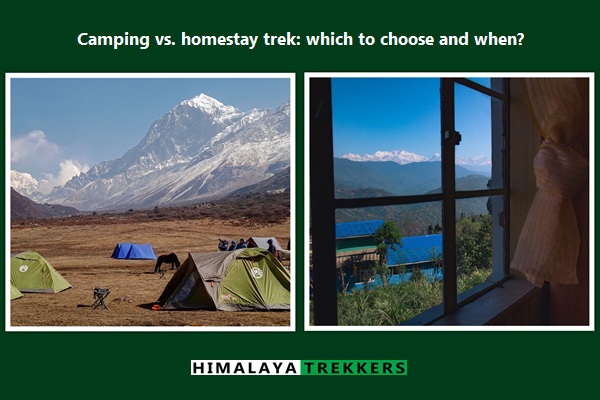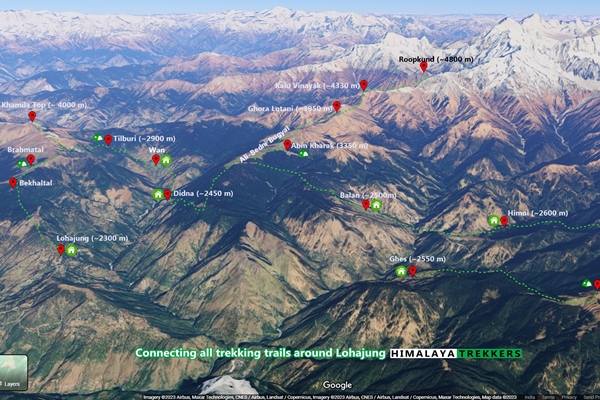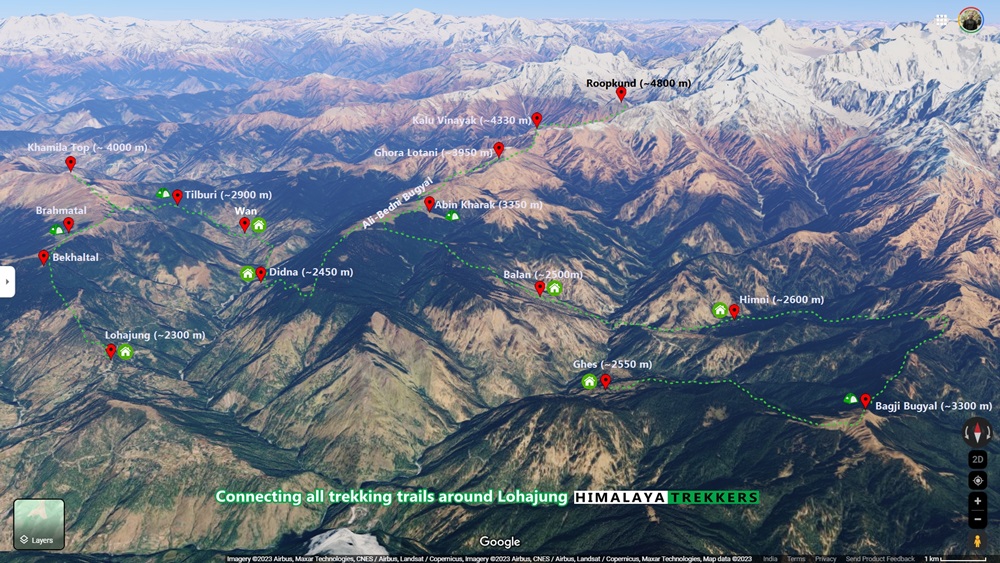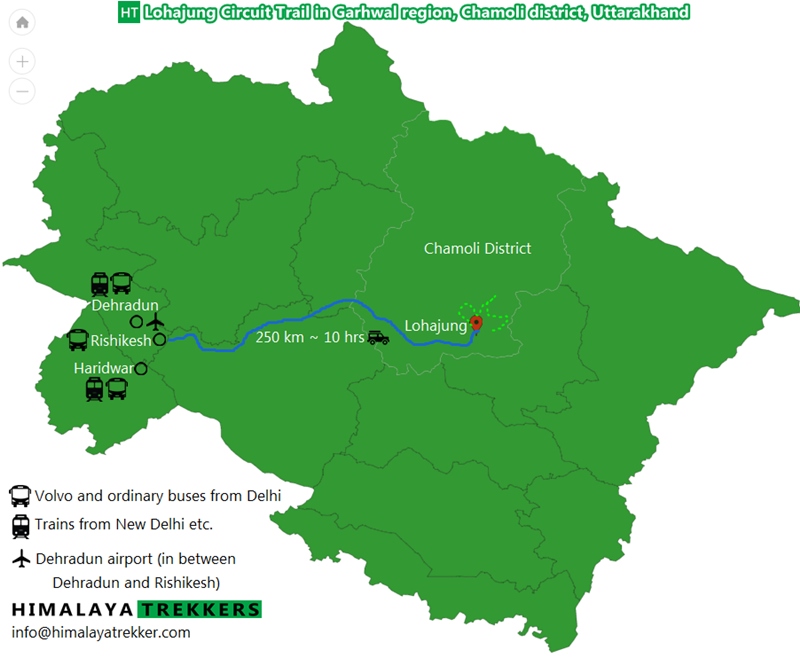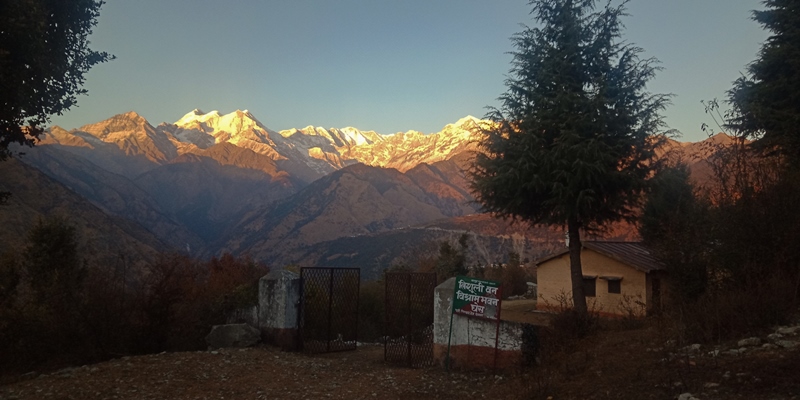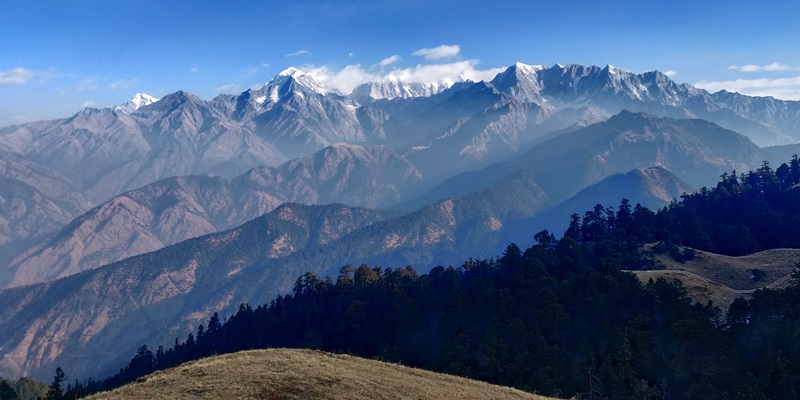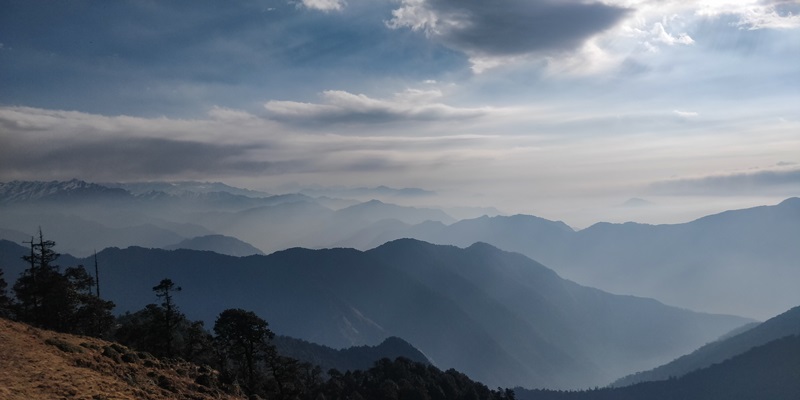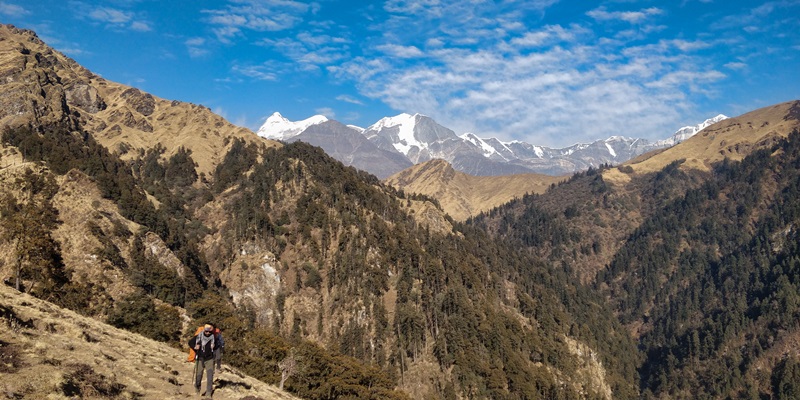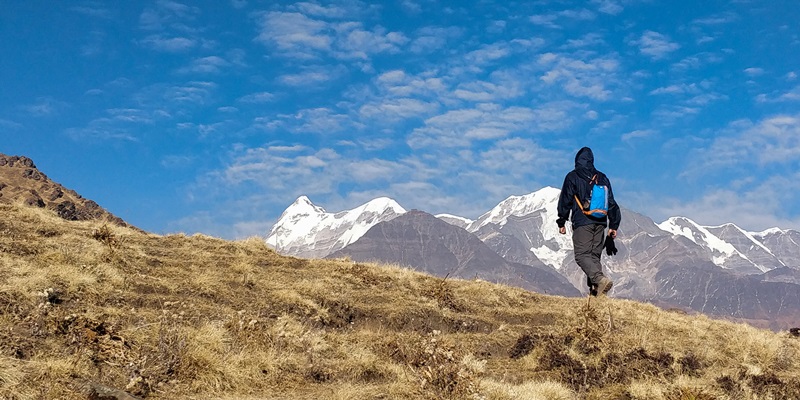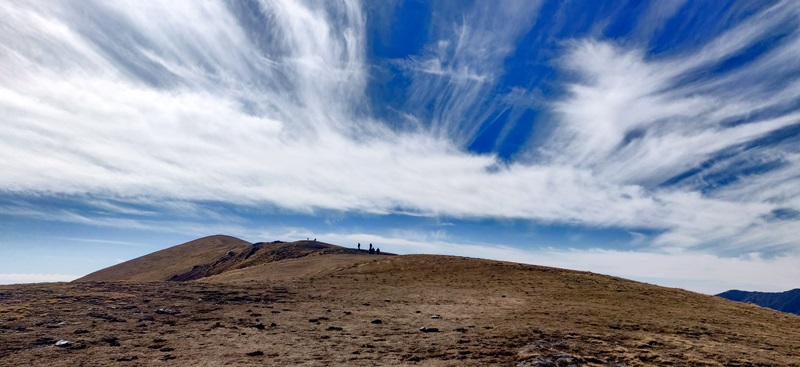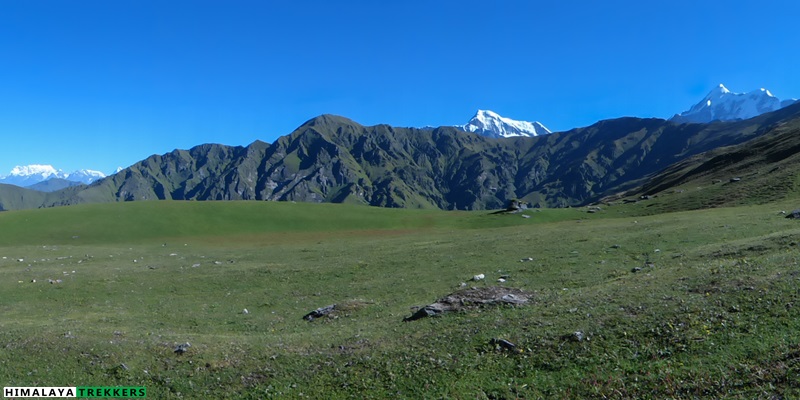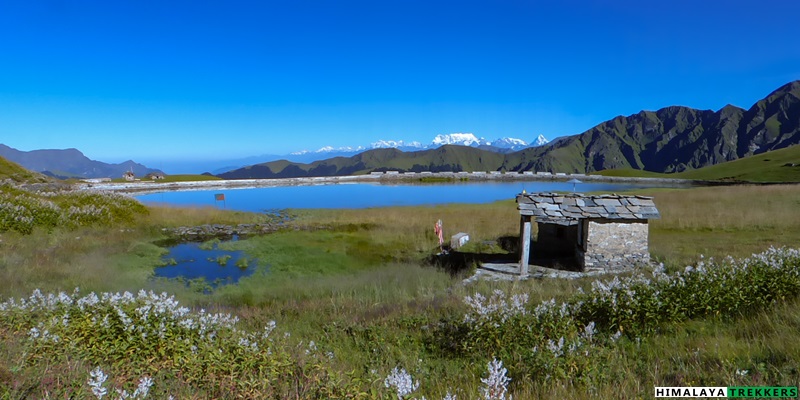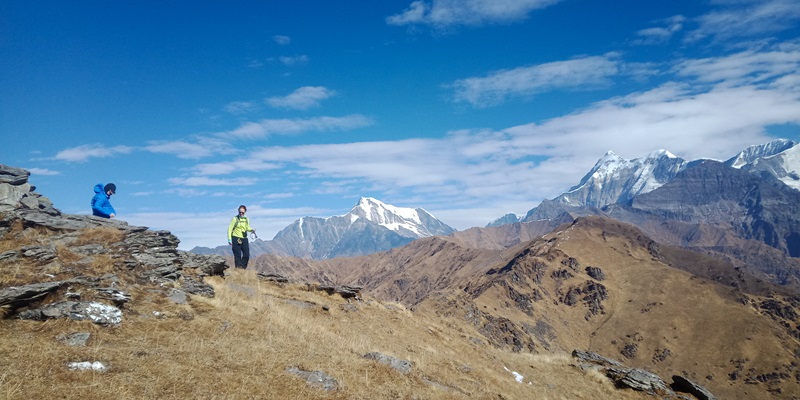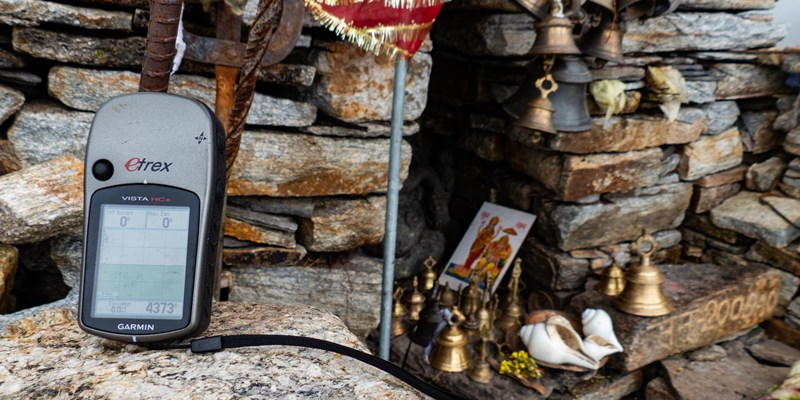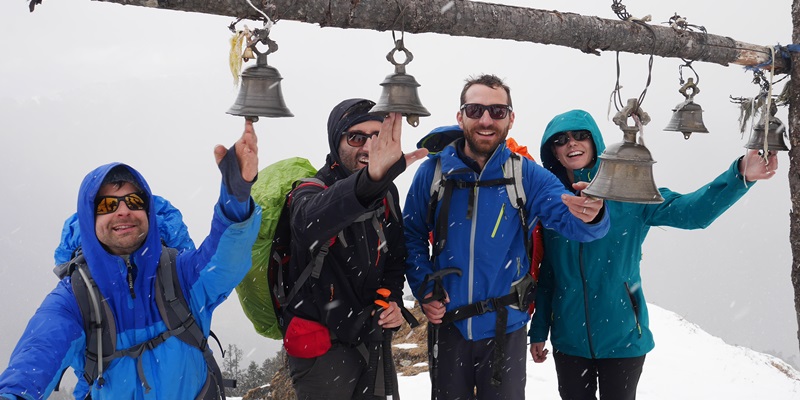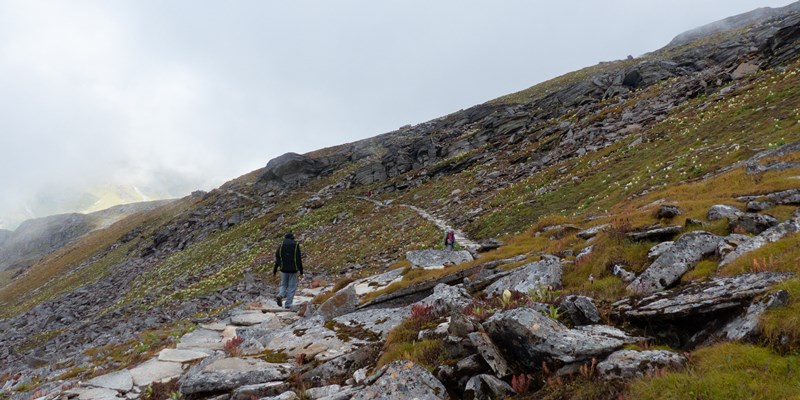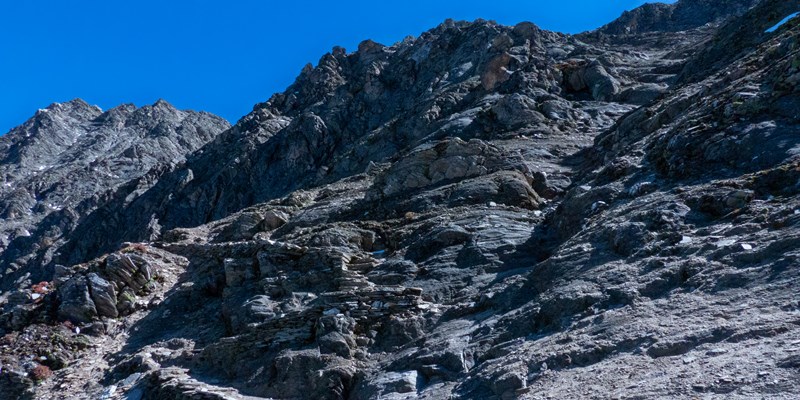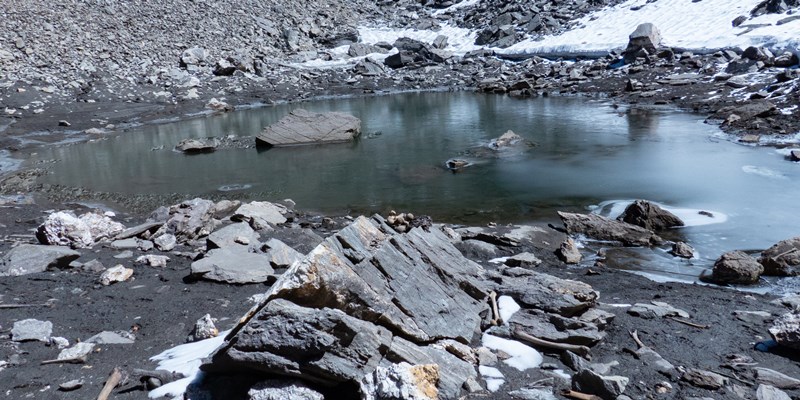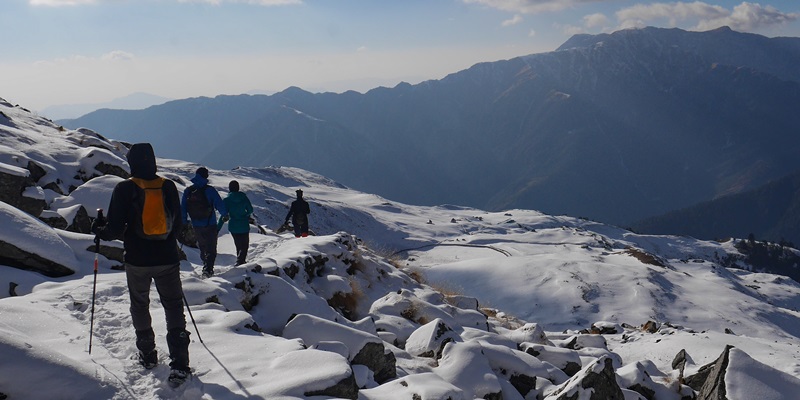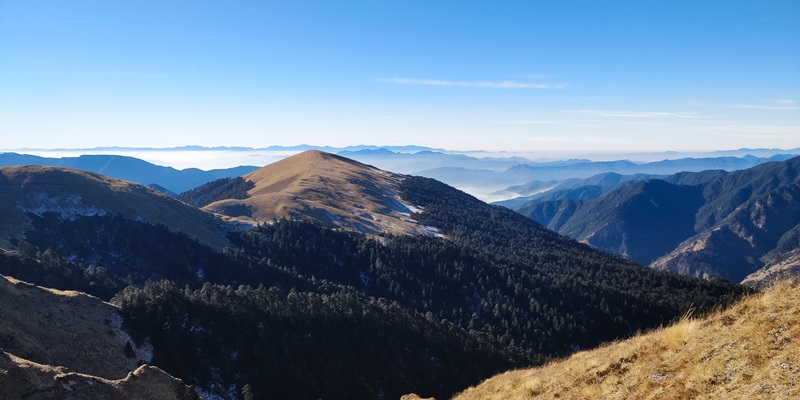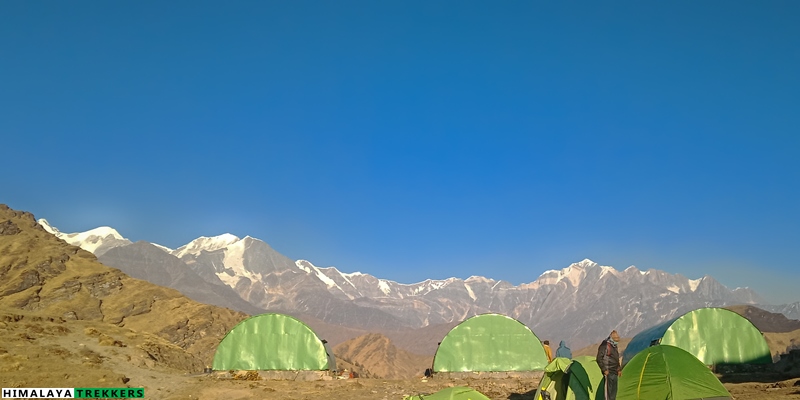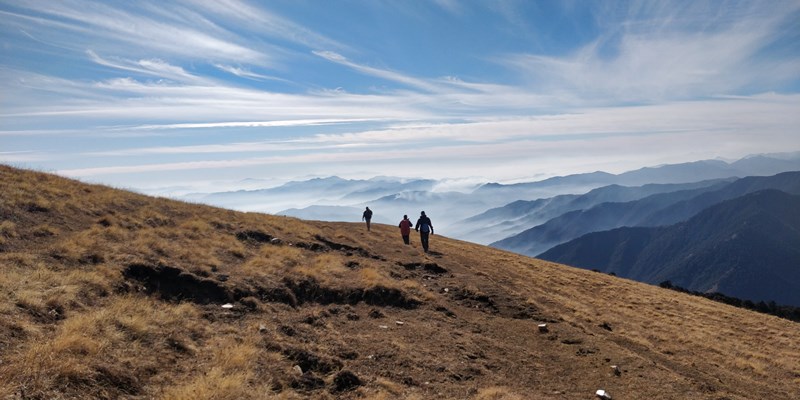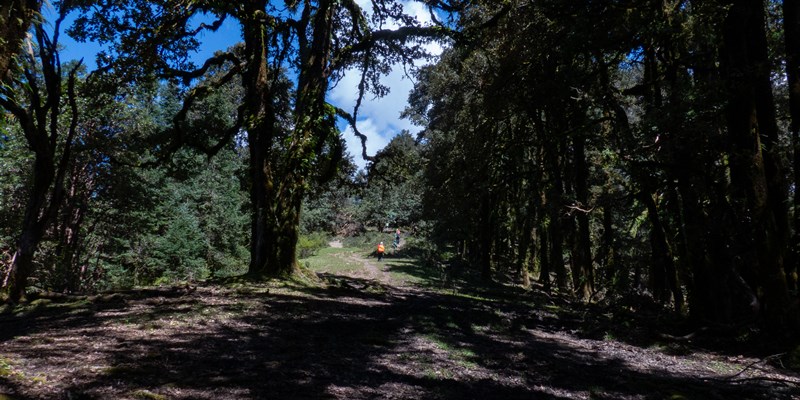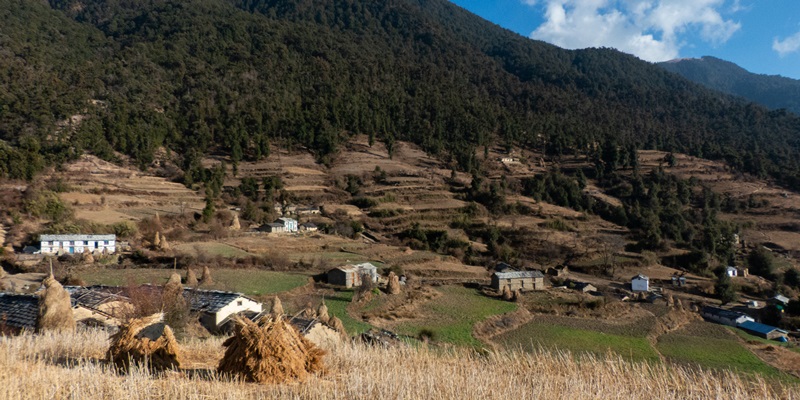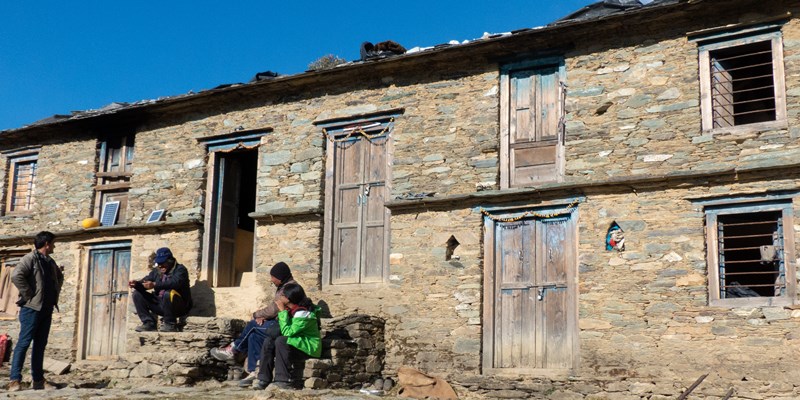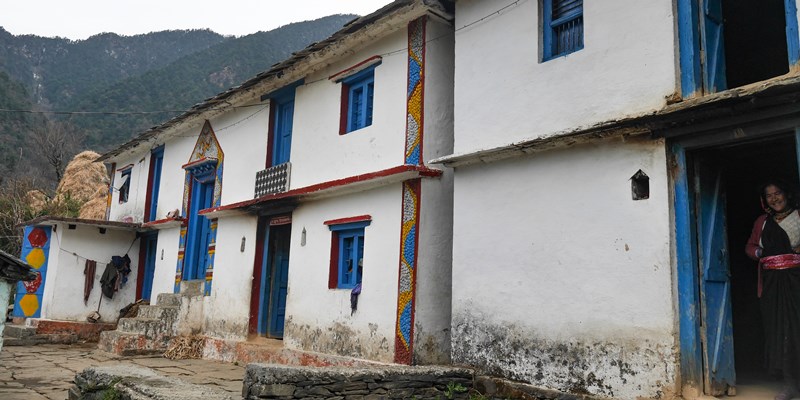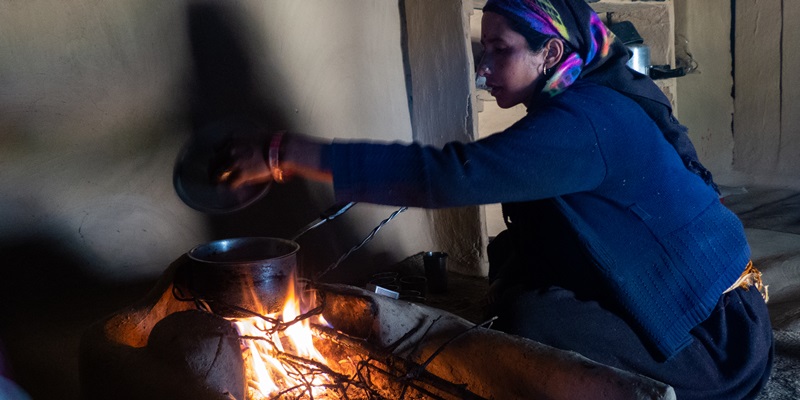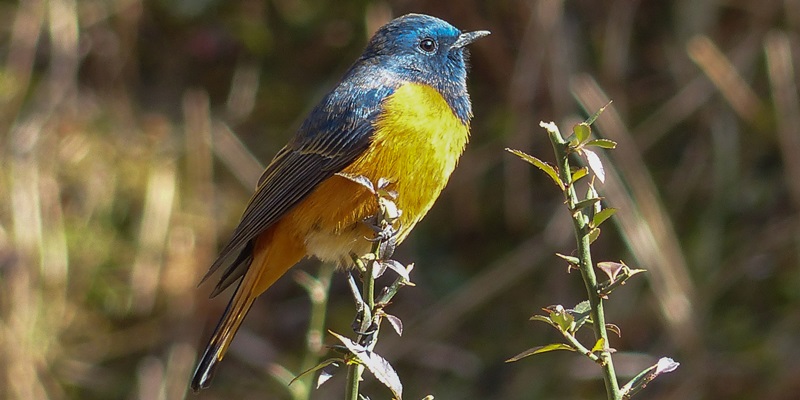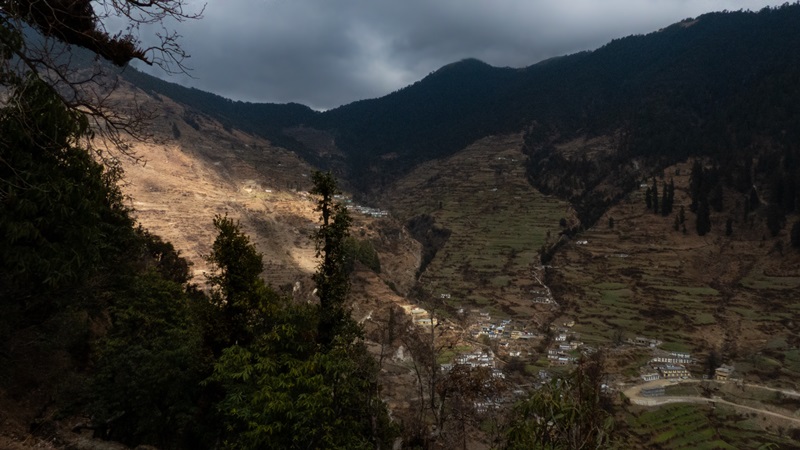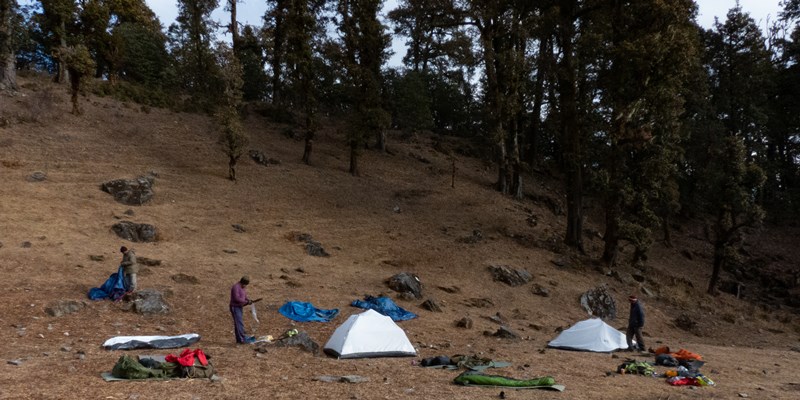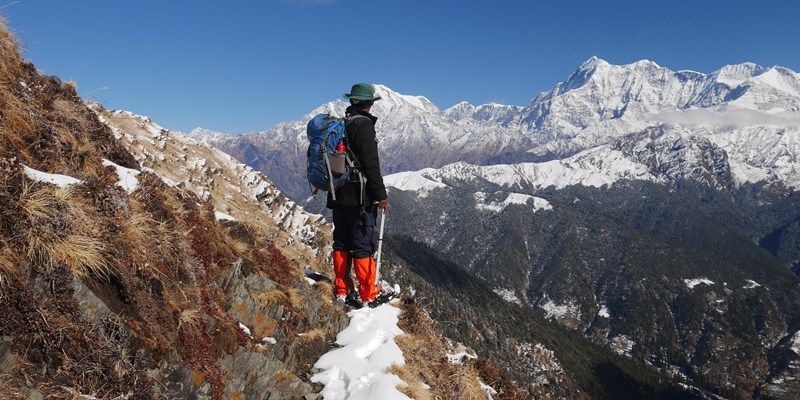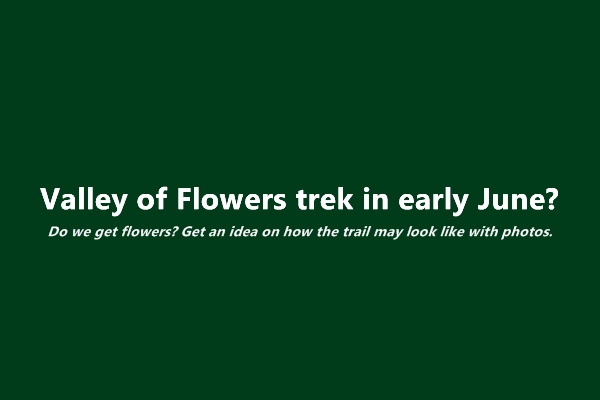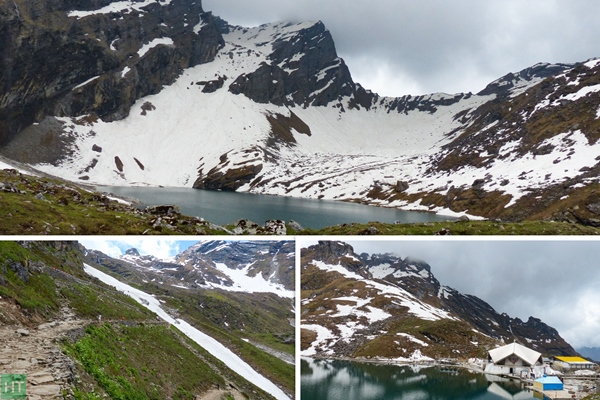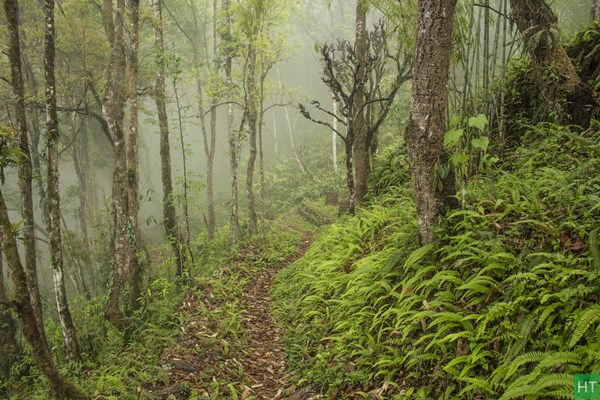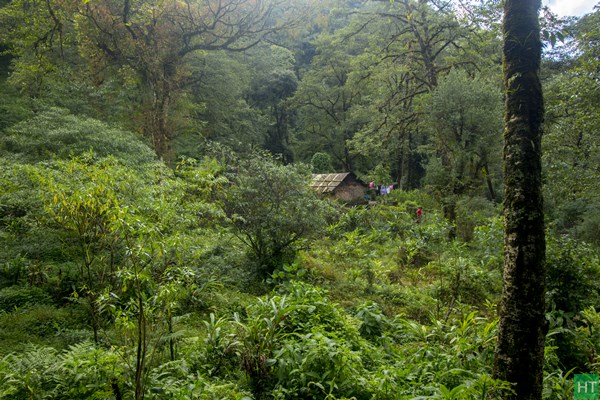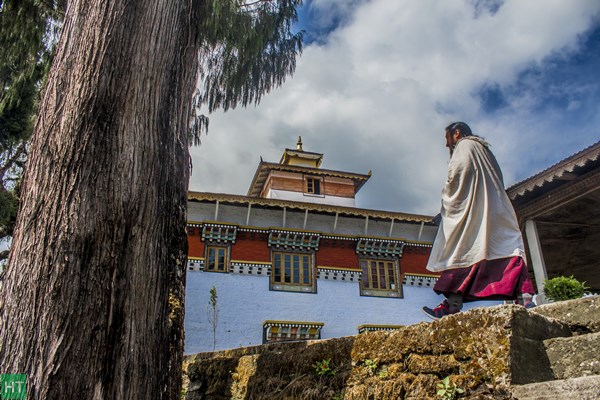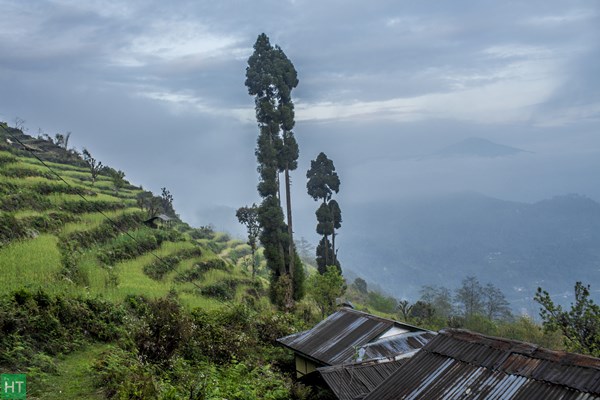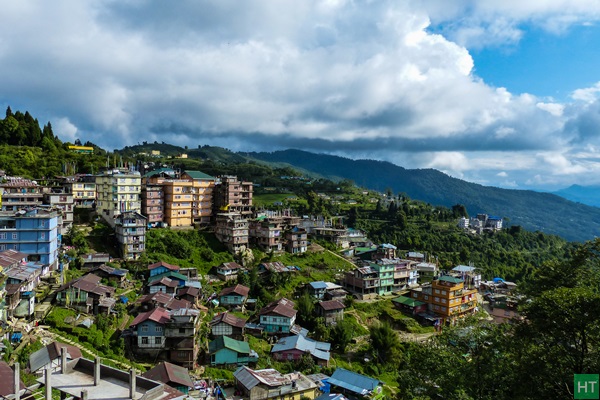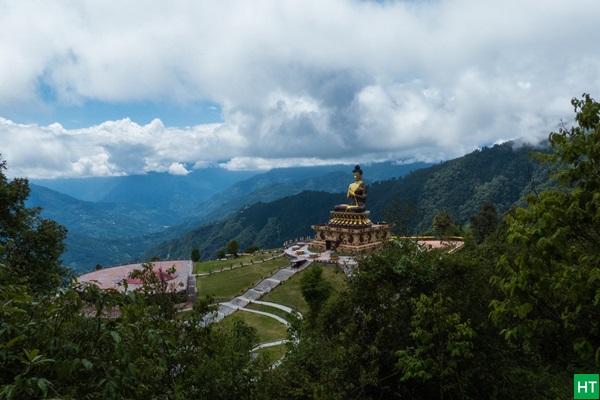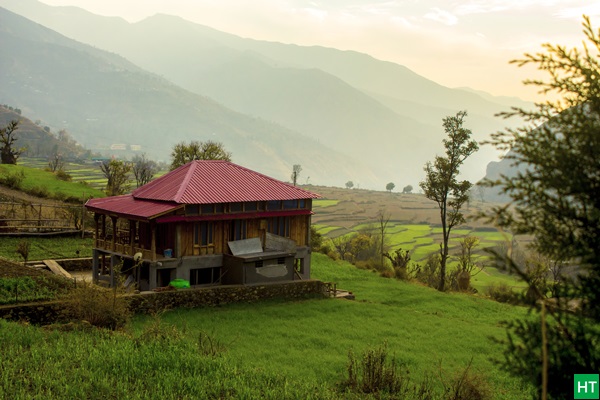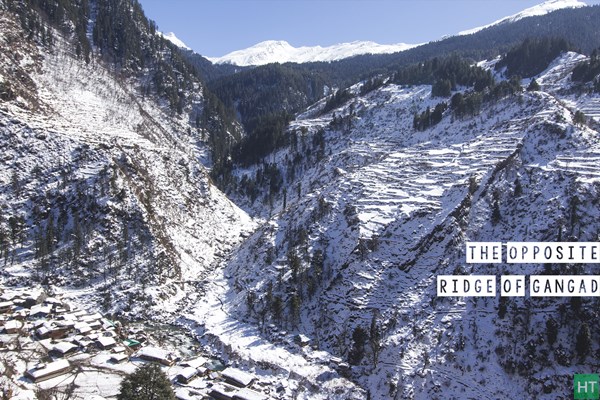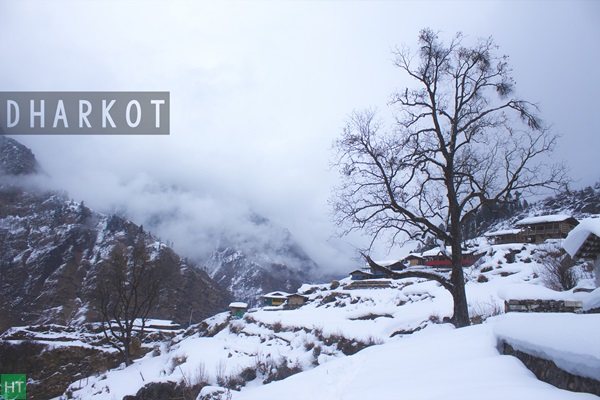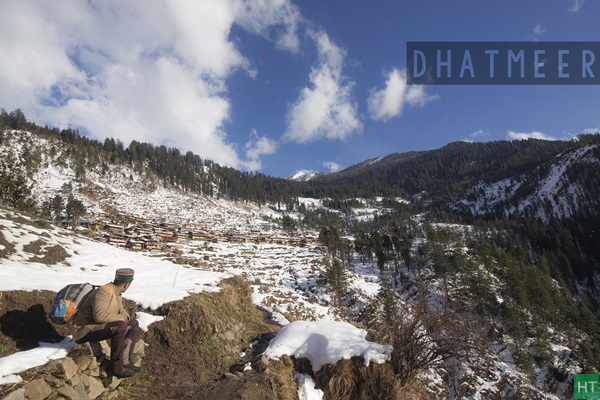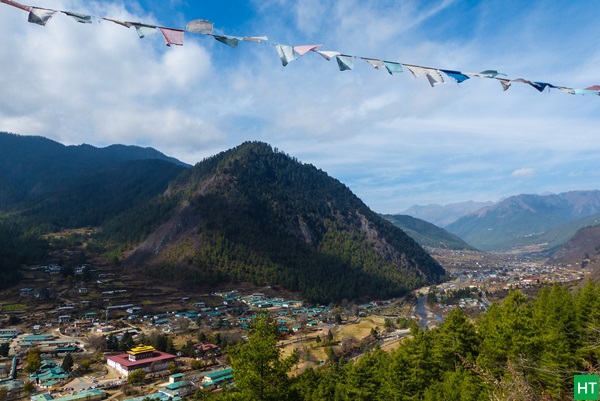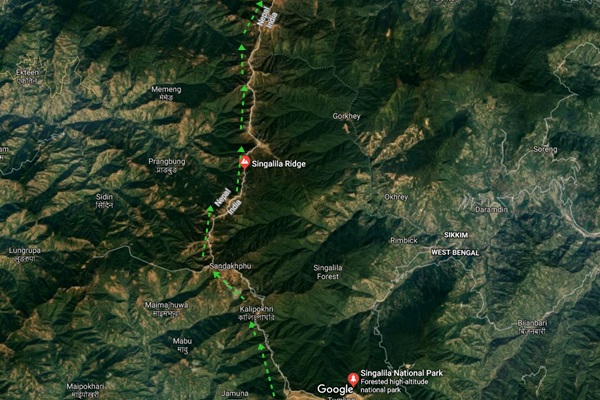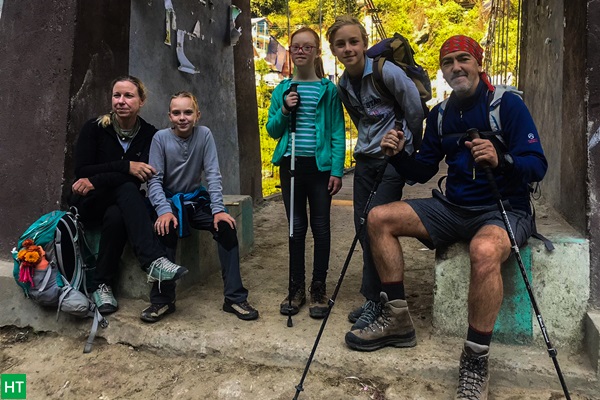Planning a 2 weeks vacation which should include a trek in Sikkim or Darjeeling area and a later trip to Bhutan spanning 2 weeks.
Below is the email conversation which enabled the prospective trekkers to take right decision as per their choice and expectations. Read trekkers enquiries in GREY and our response in BLACK. Thank you for reading with patience!
My husband and I are planning a trekking tour in Sikkim in April and are seeking your guidance on our draft itinerary and are looking forward to your proposal.
We would like to trek from Yuksom to Dzongri La in 4 days.
The itinerary is the following:
Very early morning pick up in Darjeeling by car and drive to Yuksom. Start walking in Yuksom around noon to reach Tsokha in the evening.
2nd day – Tsokha to Dzongri / Dzongri La
3rd day – return from Dzongri La to Tsokha, start around noon to reach early evening.
4th day – walk Tsokha – Yuksom (5-6 hours) and drive by car to Gangtok where we spend the night.
5th day explore Gangtok and area by car/foot
6th day leave Gangtok to be in arrive in the evening in at border to Bhutan, stay there for night. Include monastery and other sightseeing in the 7-8 hours drive. Next morning cross border with Bhutan travel agency.
Thanks for your feedback, we have a good fitness level and like hiking. Fully aware that the 1st day of the trek is a tough day with more than 1000 m in altitude.
We don’t mind driving in the dark and getting up early if this is OK for the driver.
Greetings. Thank you for reaching out to us, HIMALAYA TREKKERS (HT). We would be more than happy to plan your trekking trip to Sikkim.
However at first glance, your schedule looks hectic, and can be pretty tiring. It’s always tempting to fit more places/things to see within a short schedule, but can be at risk as well.
Regarding permits for Non Indian nationals in Sikkim: We have broken down the Permit Requirements here in detail. In brief, to enter Sikkim you need one RAP ( Restricted Area permit) or previously known as ILP ( Inner Line Permit). It would be issued free of cost when you enter Sikkim or you can get it from Darjeeling. You can visit all the tourist places with this permit. To trek, however, you need another permit called PAP (Protected Area Permit). You can not trek solo in Sikkim if you’re a foreigner. PAP is only issued for at least two foreigners. It can only be issued by a registered travel agency from the Tourism and Civil Aviation Dept of Gangtok(capital of Sikkim). We charge an additional ₹3000 as a Permit Processing Fee to the foreigners. We’ll include this in the package for you.
Note: You can get Sikkim entry permit from their office in Darjeeling also. However we need another day to process your Trekking Permit/PAP from Gangtok (meantime you complete Darjeeling and reach Yuksom).
Although it is not impossible to complete your itinerary (assuming you are fairly fit persons), although you have to be careful about the following:
1) In April, it is possible to start in the early morning, say around 5 am from Darjeeling. However the drive to Yuksom will take around 6 hours. Then there will be some permit procedures before you start your hike to Tsokha. It gets dark in Sikkim by 6 pm around mid April. (Sikkim is in eastern India and we have only one timezone).
2) You should be get acclimatised very well during the trek. In two days, literally you will be gaining an altitude of ~ 2000 m, to reach Dzongri. I hope you have not faced any acclimatisation issues in the past, while rapidly gaining altitude.
3) Dzongri La, i.e. Dzongri Pass is quite a distance from Dzongri. It takes ~ 5/6 hours for a round trip from Dzongri. You need to skip this on in the given itinerary but only Tsokha to Dzongri that day and camp.
4) Note that Yuksom to Gangtok is also around 6 hours of drive.
Please feel free to revert for any queries or any inputs which you may like to share with us.
Thanks for your feedback and advise, much appreciated. We trust your input as you have the knowledge and we only can assess our abilities from past experiences.
Please see below our comments and questions. We would appreciate if you can provide us with an itinerary and cost for the trip. does your company also offer trips to Bhutan? We would love to have support from one travel agency for our whole trip. From Bagdogra to Paro, which we will leave on the 18th around noon.
- We are OK to start at 5 am and spend if necessary the last hour walking in the dark of safety is not compromised. We can bring headlamps.
- No, we haven’t.
- Oh, we weren’t aware. In other itineraries we read it felt more like 1 hour. Obviously, as this is the reason why we are going there, we would need to spend sufficient time exploring the area.
- We are aware and OK to do so if the driver is OK to drive in the dark.
As I read your email, following are my suggestions:
Regarding Bhutan travel: Recently last November we did a recce trip to Bhutan including Thimphu, Punakha and Haa valley (we skipped Paro due to shortage of time) with a self driven car. As of now travelling to Bhutan has permit relaxation for Indian tourists. We recommend that you book through a registered Tour Operator from Bhutan. HT can only take “bookings” from you, but has to arrange through only a local tour operator. We say many foreigners travelling to these places with good quality Bhutanese Tour operators.
If you are running short of time, you may consider getting a flight from Bagdogra (IXB) to Paro (PBH), though not operated daily. On the other hand if you travel by car then you go to Jaigoan border in India and Phuentsholing on the other side in Bhutan. During this drive you will cross some nice stretch of foothills forests (localled called Dooars) and tea gardens.
About Dzongri and Sikkim trip: In my opinion you may consider stripping the idea of travelling towards the capital region, i.e. Gangtok. It’s mostly a concrete city with hotels, as I have seen it.
On the contrary West Sikkim has also beautiful and pristine monasteries, around or on your way to Yuksom. Check our monastery circuit trail in West Sikkim to get an idea. Also it’s worth to stay a night and sleep at Yuksom before you have a fresh start to Tsokha.
I will be able to suggest an itinerary catering most, if you may share your arrival to Bagdogra and leaving out to Bhutan.
Also we can arrange all car transfers starting at your arrival at Bagdogra and till Bhutan border including Darjeeling and Sikkim.
Please feel free to add anything which comes in your mind.
This is good advice! Let’s try to strip out Gangtok and spend more time in West Sikkim and check option to fly from Bagdogra to Paro or by car.
We will land in Bagdogra on the 5th around noon and would like to stay 2 nights in Darjeeling and surrounding just to overcome the jet lag and explore this beautiful area.
We have already booked a flight from Paro to Delhi on the 18th around noon. Latest on the 14th we want to be in Bhutan because otherwise it’s too short. I like your proposal for Bhutan including Thimphu, Punakha and Haa valley and no Paro. Which tour operator do you recommend – really interested in knowledgeable guide who are able and willing to introduce us to culture and ways of living in Bhutan and design a peaceful and insightful journey other than taking us to the tourist places. Culture and nature are our key priorities.
We also looked at the monastery circuit trail you mention in your mail and find it very appealing. So I was considering that as an alternative to the Dzongri trek especially because it might be less visited.On your homepage I found a suggested itinerary. Does it make sense to combine day two and three in one so we can save one day? If we do that, porters and horses might be an interesting option.
What about the Singalila Trek? Would it be possible to hike only a part of it or is it a circuit itinerary you have to do completely?
Here I first summarise my understanding on your proposed trip(s)/tour(s) as of now :-). Please correct me if I am wrong.
- You have approximately 2 weeks, 5th April noon landing at Bagdogra and 18th April noon flying out from Paro.
- It is a must to include both India & Bhutan within the travel.
- Some hiking option(s) with a local cultural quotient in it within your travel.
Now certainly one would like to get the most out of an itinerary, based upon their particular preferences and liking. I would like to know more about your expectations from the tour.
A note: Sikkim/Darjeeling area in eastern Himalayas, is known for its dampness and prolonged monsoon. Afternoons are cloudy, prepare for pre monsoon rains, even in early April. Mornings are clear on high altitude and normally produce reasonable good views of the high mountains. Mid April will rarely produce clear mountain views like one may get in Late Oct/Nov (Autumn). On the contrary during mid April, i.e. spring time, it is Rhododendron/Magnolia flowering season inside misty jungle and very charming in its own.
Below I will try to elaborate about various hiking options:
1) Dzongri trek: A moderate hiking trail, however, reducing duration makes it strenuous in nature. Trail offers splendid Kanchenjunga views and other high mountains above 6500 m, from a very close distance. Once you start walking there will be no village monastery etc. However there will be other hiking groups camping around. This you should consider if your focus is more on going to high altitude and somewhat serious hiking exercise. Here you will get required information about Dzongri trail which you will cover:
https://www.tourmyindia.com/treks/dzongri-trek.html
2) Monastery Circuit trail: This is more of a very relaxed low altitude hike, who are particularly keen on staying in simple homestay, 3/4 hours of leisurely hike, spending more time in villages around and last but not the least, visiting pristine and holy monasteries. If hiking is your main focus, you may still visit Dubdi and Hongri monastery and return to Yuksom in a day’s hike. Here is the details link:
https://dev.himalayatrekker.com/tours/sikkim-monastery-trail-homestay-trek/
We may suggest a part of the above with Dzongri trek within your itinerary. This covers two main essence of Sikkim, its high mountains and some off the route cultural essence as well.
Suggested itinerary:
5th April: Around noon arrival at Bagdogra. Around 3 to 3 and a half hours drive to Darjeeling.
6th and 7th April: Around Darjeeling, various sightseeing (HMI/Zoo, Tea gardens etc). On 7th April after lunch (by 1 pm) drive from Darjeeling to Yuksom. 5/6 hours. Your ILP for Sikkim will be processed at Melli check post (around 15/20 minutes time). Homestay accommodation e.g. Limboo Homestay (they serve organic vegetarian food only).
8th April: Explore Yuksom and around. After breakfast visit Coronation Throne site, Kathok Lake, local monastery. Later hike to the Sikkim’s oldest monastery Dubdi. This will be around 3 hours round trip. After lunch we may visit Gufa Dara village, around 30 mins hike. We can explore the small village and local community. Night stay at Yuksom. We process your Trekking Permit/PAP today from Gangtok. Alternatively after breakfast you may have a day hike to Dubdi and then further to Hongri monastery and return in the afternoon.
9th to 13th April: Trek to Dzongri and back. 5 days/4 nights , Additional night at Dzongri to explore the area and Dzongri La/Lampokhri lake side. If we start early from Tsokha on 13th then we will reach Yuksom in 5 hours. Then we can drive from Yuksom to Bhutan border at Jaigaon on Indian side. 250 Km drive, should take around 8 hours. (meet your Bhutan tour representative here). Night stay at Jaigaon, India.
14th to 17th April: Enter Bhutan Phuentsholing (permit/visa process at immigration office), Bhutan Thimphu, Punakha, and Paro. Essentially a sightseeing tour, though roads are better than Indian Himalayas!
18th April: Flight around noon from Paro to Delhi.
3) Singalila trek: This is probably a perfect blend of some fantastic high mountain views along with staying in homestay/lodge and getting some local cultural insights. You will already be in Darjeeling, it’s easy to reach the trek base and start hiking. This trail is inside Darjeeling, India and very often going inside Nepal. Most of the homestays are in Nepal side. Flavour wise this may resemble to Tea House treks in Nepal. Here is the route details link:
https://dev.himalayatrekker.com/tours/sandakphu-trek/
There are advantages and disadvantages of this tour! Main disadvantage is that literally you will be left with no time for Sikkim. On the other side, spending more time in Darjeeling area and Bhutan is the main advantage. Maybe you can keep Sikkim for your next visit (may ? (Ethnically and culturally Sikkim and Darjeeling area have many things in common)
Suggested itinerary:
5th April: Around noon arrival at Bagdogra. Around 3 to 3 and a half hours drive to Darjeeling.
6th and 7th April: Around Darjeeling, various sightseeing (HMI/Zoo/Natural History museum, Tea gardens, Toy train ride, etc) and certainly enjoying the old colonial remnants of the Chowrasta/mall area, nice walks around. You may skip day tour of “many sightseeing” by car and instead walk comfortably at your own pace and explore the town and around.
8th April: Have your breakfast early, start by 7/7:30 am and drive to Maneybhajung, ~ 30 Km, 1 hour or so. After processing entry permit we will hike to Tumling, 12 Km 6/7 hours. Initial steep climb to Chitrey (please check our usual itinerary, I am hence modifying and fine tuning it). Lodge/homestay.
9th April: We will club Day 3 and Day 4 of usual itinerary and directly reach Sandakphu skipping Kalapokhari. From many past experiences we have seen European hikers including kids were comfortable doing this. ~ 18 Km, 8/9 hours. Sunset views from Sandakphu. Hotel accommodation.
10th April: Explore Sandakphu. Witness sunrise views, after breakfast walk on the lovely Phalut road. On a clear day You will literally walking straight towards Kanchenjunga and Sleeping Buddha, on flat gentle track. Return for lunch, 4/5 hours round trip. Evening sunrise for Hotel rooftop.
11th April: After breakfast trek down to Timburey. A very friendly homestay in the village.
12th April: Start early morning and walk an hour or so to the Srkhola bridge, motor road head. From here we will drive to Jaigoan, around 240 Km, 8/9 hours. Meet your Bhutan tour representative here. You may even stay on the other side of the border, i.e. Phuentsholing (much cleaner and calm place than Jaigaon).
13th to 17th: 5 days Bhutan tour. In my opinion choose Paro (Taksang Monastery etc ) instead Haa. Thimphu and Punakha.
18th April: Flight around noon from Paro to Delhi.
Regarding your Bhutan travel part:
As I wrote earlier, its better to book directly through a local registered tour operator. As per their govt policy they maintain their motto of “high value and low impact” tourism. This has empowered local operators to provide high quality services to international tourists. You will get good quality accommodation (similar to 3 start) and transfers in SUVs (e.r. Toyota Landcruiser/Prado) in their suggested fees.
There are trails in Bhutan as well. However to get an essence of the high and interior Himalayas, one should probably take on the longer duration hikes, like one From Paro to Gasa/Laya, some 10 days of trek. To visit Tiger’s Nest monastery (Taktsang, Paro) you may have a short half day hike.
We have some reference of Bhutan Tour operator(s). We may try to check, if you think you may need some help on this.
Suggesting a right itinerary for the right person(s) is most important in my opinion. I will look forward for your further inputs. Also feel free to edit, remove, add any part of any itinerary, if you like so.
We looked at your option 3 and like it a lot. There are only a few questions- when reading more about the trek, I learnt that a street has been build to Sandakphu. We were wondering how this impacts the experience – what are your thoughts?
When reading this paragraph we were asking ourselves – how much it might rain in the afternoon and if this would be the same for Dzongri ( we assume so). Nevertheless we understood that you recommend doing the trek as it holds various beauties- correct? What kind of equipment do we need ?
Regarding the night at the border. We are aware that Jaigaon is less favourable but want to avoid paying 250$ Fee only for staying the night across the border. Do you have any idea if we can circumvent this? My husband is living in Bangalore but not an Indian National.
Please be so kind and recommend agencies in Bhutan. We really like the way how you develop the program for us and trust you.
I am glad that you liked the option 3, i.e. Darjeeling with Sandakphu trek (a.k.a Singalila Ridge trek) for your India trip part.
Below are some facts and my opinion for your enquiries:
Yes there is a motor road to Sandakphu , if you call so! Initial half is a narrow concrete road, rebuilt a couple of years back. Last half is gravel dirt road. Trekking trail till Sandakphu will have some common portion with the road almost half, but it is so for 15 years or more. There will be many shortcuts, detours and walks inside Nepal also. This should not be much of an issue, despite movement of noisy old Landrovers. Note that your descent from Sandakphu to Srikhola via Timburey is through pristine forest mostly and no motor road in the vicinity.
You are correct, Dzongri and Sandakphu trail should behave very similar, weather wise. If it rains or snows on one, most likely the other will very likely get the same.
Four things are a must for any Himalayan Trek and are your personal equipment.
- a) A Trekking shoe – mid/high ankle rubber sole, waterproof membrane
- b) A Rucksack (40-50 L)
- c) A Warm jacket – can be synthetic, fleece or down jacket
d) Windproof & Waterproof jacket/clothing – outer layer.
As a general guide here is an article on what type of equipment you should get and a elaborative list of things to carry.
Indeed your time of visit i.e. spring is recommended for Singalila trek. There are fantastic mountain views, both from Tumling and Sandakphu. Also your tour has an additional day at Sandakphu. Hopefully you will get good sunrise or/and sunset views. Spring brings life to the forest. Be it flowers or birds or butterflies. I personally like to walk inside misty and foggy forest, which is a spring speciality.
I enquired with a Bhutanese Tour Operator today, whom I met at Phuentsholing last November. He helped us to book one night of hotel at Thimphu and the road permit of our Indian car, the minimum mandatory things we needed. Here is a summary of our conversation:
- Tour Fee for foreigners is non negotiable and USD 250 per person per day. Surcharge is USD 30 per person per day on the top of minimum daily tariff, i.e total of USD 280 per person per day, as you are 2 persons. This will include all accommodations (3 star quality), breakfast and dinner (lunch during sightseeing on your own), all transfers/sightseeing inside Bhutan in SUV like Toyota Prado/Hyundai SantaFe. A standard tour guide/escort will be there apart from the usual driver.
- Visa Fee for Bhutan i.e. USD 40 per person is to paid separately.
- Once you confirm/pay a tour with them, they will send an invitation along with options/range of hotels. Once you choose, they will inform Bhutanese authority. Then you apply for a Visa with USD 40 as fee. Their representative and tour guide will meet you at Jaigaon and carry out the immigration process.
- They can help in a workaround for an accommodation at Phuentsholing. The Immigration Office remains open till 9 pm, so they can get your visa upon your arrival. Then you can pay the usual hotel fee (maybe ~ INR 3000 to 4000 for a standard room) instead paying USD 280 * 2 persons for that night.
Did you check with any direct Bhutan agencies? What information could you gather?
Good morning and thank you very much for the additional information. The Trek sounds great and exactly what we are looking for.
May I ask you for the price and if you could supply porters too? I am not sure if I want to carry the big backpack all the time 😉
Concerning Bhutan we are in contact with 2 – 3 agencies. We are trying to get an impression about the opportunities there because we are looking for a mix out of a bit of trekking, some culture and some spiritual experiences like meditation.
To check these things before pricing:
Do you want us to add anything extra, car transfers airport etc or only TREK FEE? – I.e. Manebhanjan to Srikhola along with one porter (He can carry up 2 no of rucksacks/similar up to 17/18 kg)? I assume the trek high standard quality accommodation and upgrade meals with a decent English speaking local guide. Anything more you would like to specify here? e.g. car transfer by Toyota Innova etc.
Did any of the agencies in Bhutan shared something interesting apart from usual itineraries? I see a potential about an itinerary starting from Phuentsholing – Thimphu – Punakha Dzong – Gasa – Laya – Gasa – Paro, tight, but possible. Our recce plan was this, but only “foreigners” can go to these places (Gasa and further to Laya) not the Indians! This may give you something really untouched in the Kingdom of Bhutan :-). You will get very limited information through Googling. It’s worth a research from your end in my opinion.
